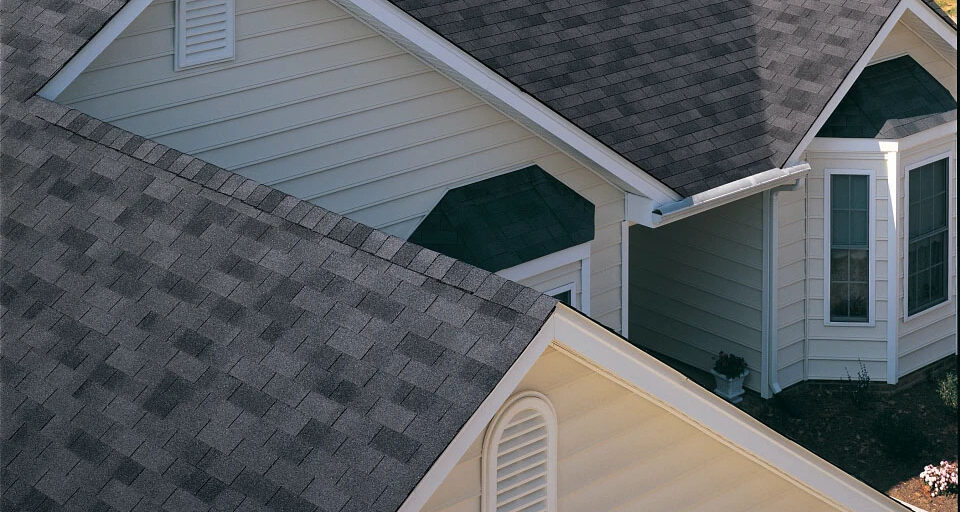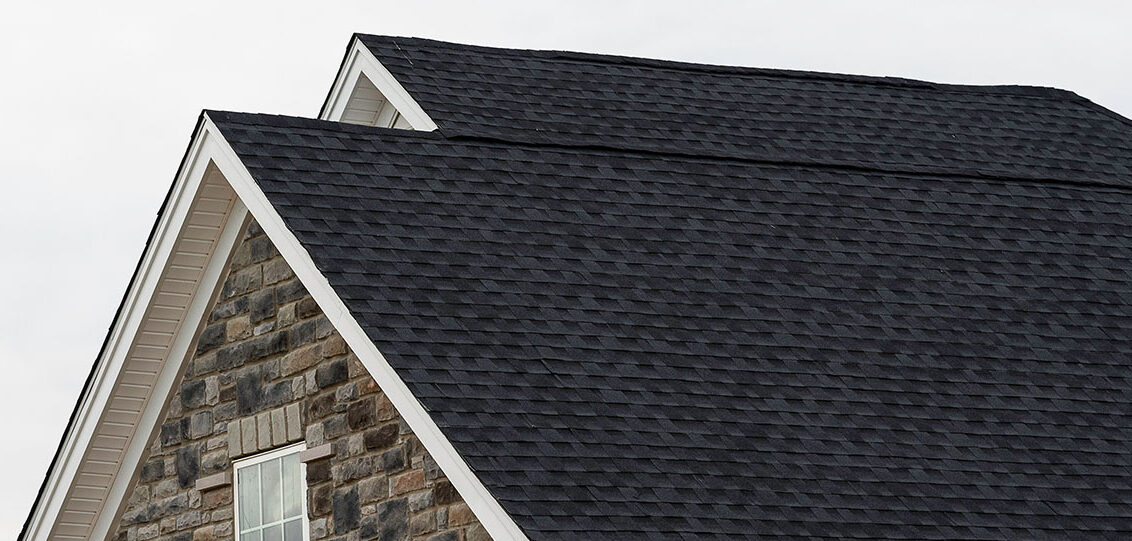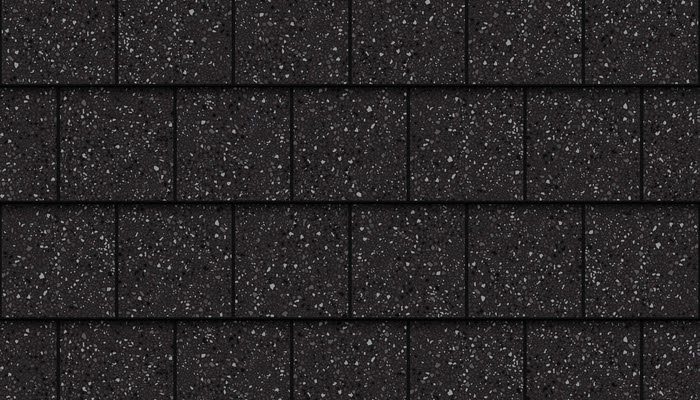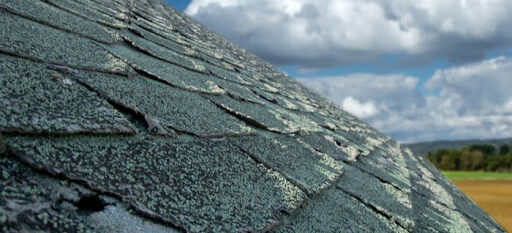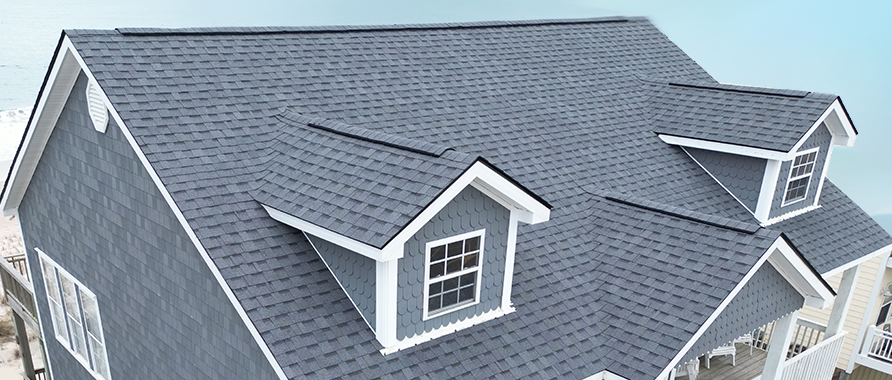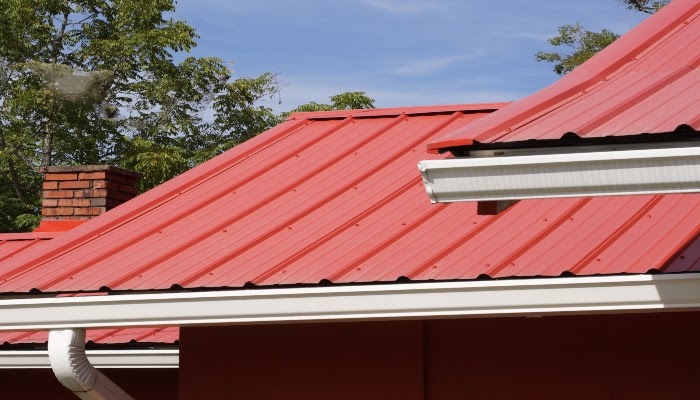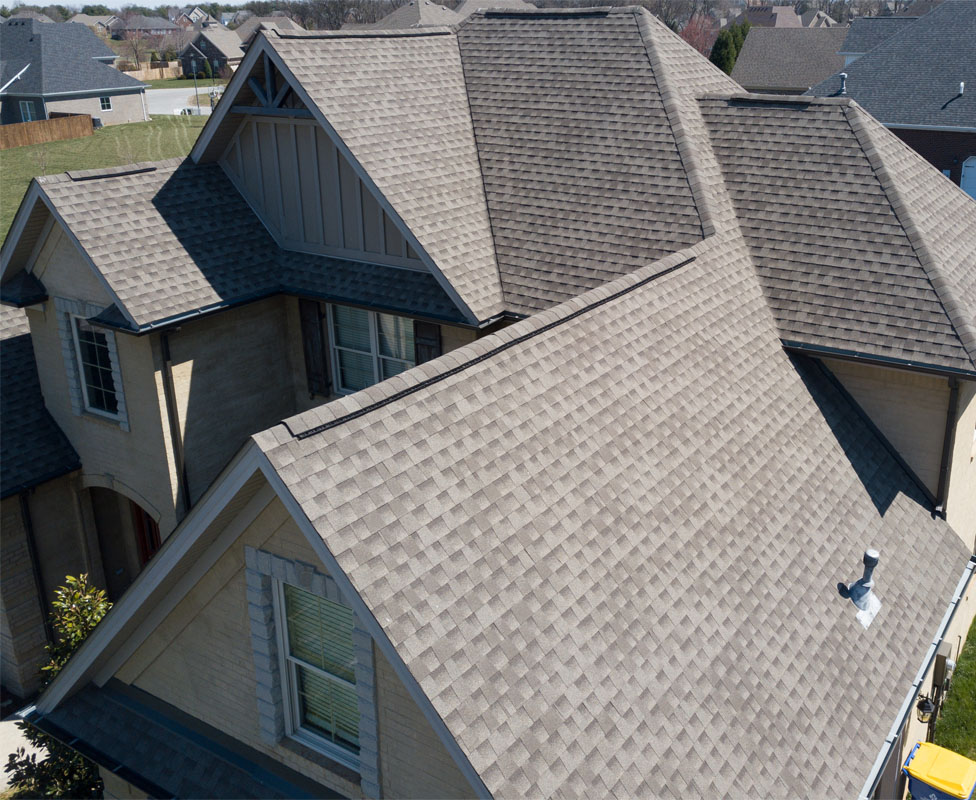
17 different types of roof designs & styles
Each type of roof is different and possesses its distinctive characters and appeal. Below are a few roof types you can consider when purchasing or building your home.
60% off installation
Special financing available. See details
Picking the right roof is one of the most important architectural decisions you will make for a new home. Considering what a significant investment this will be and the variety of choices you can choose from, narrowing down your final pick can be complex. From functionality, style, budget, materials to be used, and considering your area’s climate. Here’s a list of the most common types of roofs.
A-Frame roofs
The classic A-Frame type of roof looks like peaks. They were inspired by an architect named R.M. Schindler in 1934 for a client. These kinds of roofs are often used in guest cottages, cabins, and vacation homes. They have symmetrical frames, and because of their tall structure, they require a rafter.
Double-pitched roofs
Also referred to as double roofs, these are constructed using lightweight trussed rafters and purlins. Since the length span is larger and will need support, a beam is used under the rafters. The beam that is in between the wall plate and the ridge is the purlin. These kinds of roofs can be symmetric and asymmetric.
Gable roofs
Gable roofs or asymmetrical gables have an extended section of the roof that extends to a wall on the opposite side. The intersecting slopes are commonly known as the A-shaped part of the gable roofs. Gable roofs consist of roof trusses, rafters, and purlins. They are primarily used in colder regions and areas with strong winds and rainfall.
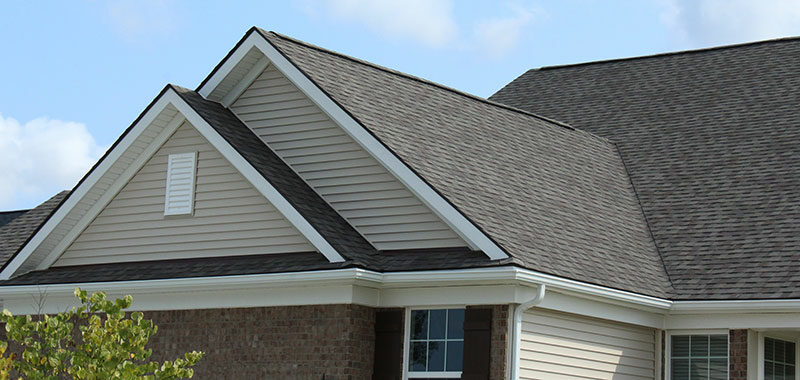
Hip roofs
Hip roofs have all sides sloping downwards to the walls. Unlike gable roofs, they are more complicated to construct with their trusses and rafters. This type of roof has no vertical sides, slab-sided ends, or gables; they are self-bracing and have a higher resistance to wind damage.
Skillion roofs
Skillion roofs are pitched steeply, allowing it better drainage than the other roof types. They are mainly constructed on top of rafters to achieve the slope needed. Compared to the flat roofs, they require less maintenance, relatively cheaper, and are easier to install. Popular with homeowners going for a minimalistic and sleek look.
Mansard roofs
Designed and named after a French architect named Francios Mansart, mansard roofs or French roofs were first constructed around the 16th century. Primarily popular in France but can be seen in homes worldwide. Mansard roofs have four-sides and two slopes on both sides and a lower pitch. Its complex design categorizes it among one of the more high-end and pricier roofs. This is due to its steep slope designs that require highly skilled individuals to install and maintain.
Gazebo roofs
Gazebo roofs can be made with vinyl, asphalt shingles, rubber slates, cedar shakes, or metal roofing. Gazebos are usually constructed above a raised floor with a closed roof and open walls to allow air to flow freely.
M-Shaped roofs
M-Shaped roofs have two sloped sides that meet in the center with slopes on both sides. Their double-pitched design especially makes them a double gabled roof. They rest on two sides of a bearing wall wherein the two slopes meet the middle and form an “M” shape.
Dutch gable roofs
Dutch gable roofs are a combination of a hip roof with four sloping sides and the top of a gable roof. This classic design is common in colder climates. The lower roof eaves provide shade and protection from the rain. This also allows for a cooler space because it allows heat to escape easily.
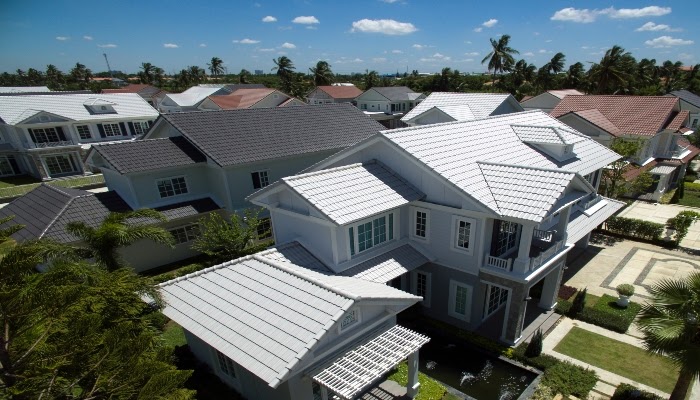
Clerestory roofs
Clerestory roofs are all about slants, angles, and curves. Two sloping sides are connected by a short and vertical wall. This type of roof has a vertical wall that rests between two sloping sides. Clerestory roofs can be symmetrical or asymmetrical. Their design is closer to that of skillion roofs.
Bonnet roofs
Bonnet roofs consist of double slopes on four sides. With the lower slope less steep and extending over a raised porch. They are also referred to as kicked-eaves, modified gable, and belcote. They are mostly seen in homes with porches, greenhouses, cottages, mountain retreats, and ranch houses. Bonnet roofs can be challenging due to their complexity. Bonnet roofs are mostly suitable for areas with high winds and are less likely to be damaged like gable roofs in case of an intense hurricane.
Gambrel roofs
Gambrel roofs are symmetrical, with two-sided roofs and two slopes on both sides. Most popularly used in barns and sheds because of the additional storage space they can provide. Its design of a sloped roof maximizes the upper level of the building while shortening a tall roof.
Parapet roofs
Parapet roofs have been around for a hundred years and were designed to strengthen structures in preparation for battle. A parapet roof is an extension of the wall at the edge of another structure. In modern homes, parapet roofs look like flat roofs. They are often used to cover vents and add proportion and height to the appearance of buildings.
Saltbox roofs
Saltbox roofs are gable roofs that consist of asymmetrical planes, with one long steep plane and a short one with a low slope. These roofs were first built around the 18th-century colonial period.
Butterfly roofs
Butterfly roofs are believed to be originally designed to catch rainwater. The water collected would then be used for watering plants, flushing toilets, and even for drinking. Resembling the wings of a butterfly, these roofs slope down from opposite valleys near the roof’s center.
Flat roofs
Flat roofs have a slight slant and are not entirely flat. This is to allow water to go down the drains. There are three different types of flat roofs that you can choose from –built-up roof, modified bitumen roof, and rubber membrane roof.

Shed roof designs
Shed roof designs are a combination of gable and flat roofs. These include beams with one higher than the other, which creates a slant. Depending on the design of your home, these can range from a 7 to 35-degree slant.
Are you thinking about a home improvement project? Feel free to contact 1-800-HANSONS for a free estimate today.
Why 1-800-HANSONS?



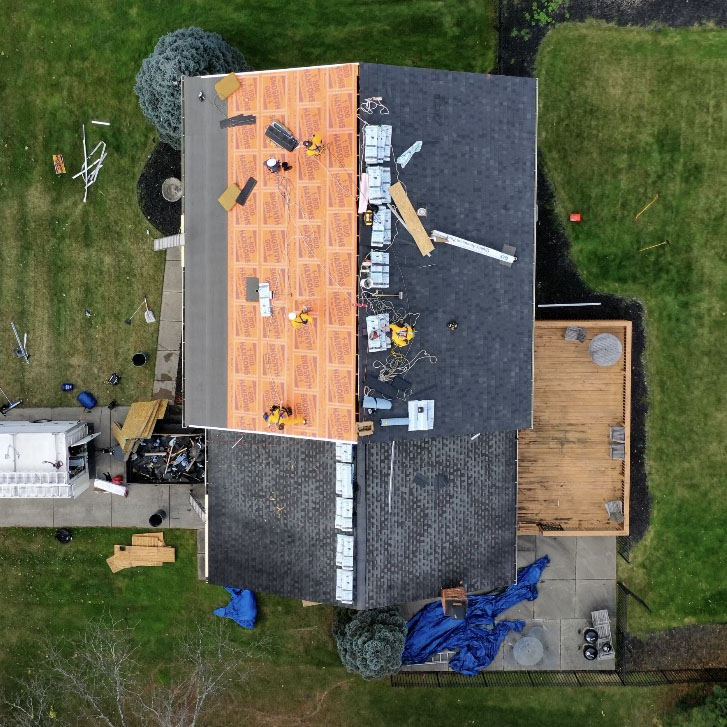
Ready to get started?
We’re ready to help transform your home with durable, energy-efficient products that can help protect your home, improve your comfort and save you money.
Our consultation includes:
- Inspecting your home and gathering precise measurements
- Displaying our best-in-class products and design options for you to choose from
- Providing an immediate estimate and finance options to fit your budget
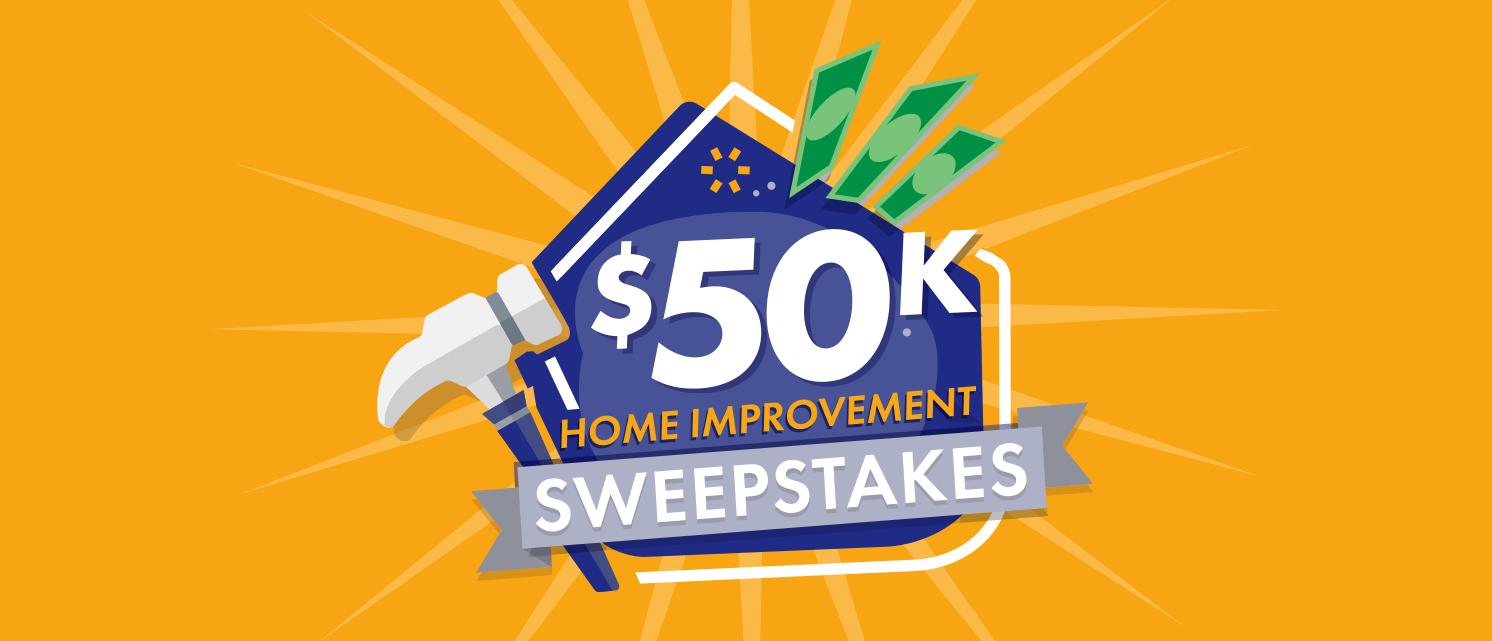
Enter today for a chance to win a $50,000 home exterior makeover!
60% off installation. Special financing available.
Labor Only. Roofing and siding are priced by the square. This offer is not combinable with other offers/promotions, may be withdrawn without notice, and prior sales are excluded. You must purchase by 3/31/25 to qualify for the special offer. The Lifetime Guarantee applies to roofing, siding, windows, and gutters. Bathtubs and showers offer a no-leak guarantee. Visit www.hansons.com/licenses/ for current contractor license information. Other restrictions may apply.
Disclosure: GreenSky® program consumer loans are made by Synovus Bank, Member FDIC, NMLS #408043, without regard to age, race, color, religion, national origin, gender, disability, or familial status. GreenSky Servicing, LLC (“GSS”, NMLS #1416362, www.nmlsconsumeraccess.org) is a financial technology company that manages the GreenSky® program by supporting originations and servicing the loans on behalf of banks and other financial institutions that make or hold program loans. GreenSky® is a registered trademark of GreenSky, LLC and is licensed to banks and other financial institutions for their use in connection with the GreenSky® program. GreenSky LLC and GSS are not lenders. All credit decisions and loan terms are determined by program lenders.


